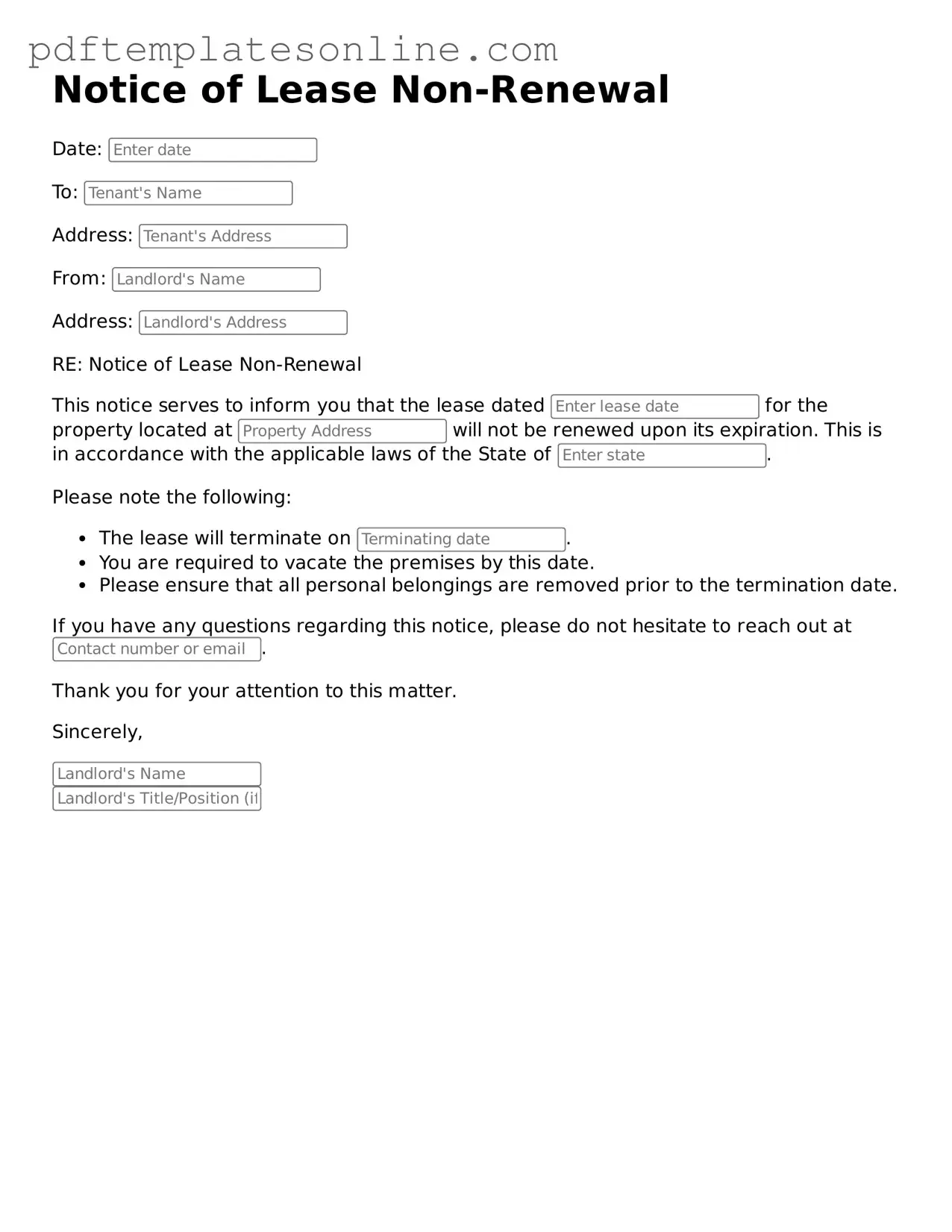When filling out the Notice of Lease Non-Renewal form, it’s easy to make mistakes that can lead to complications. One common error is not providing the correct date. The date is crucial because it indicates when the notice was given. If the date is missing or incorrect, it could lead to confusion about the notice period.
Another frequent mistake is failing to include the tenant’s full name. This might seem minor, but it’s essential for clarity. Without the tenant's complete name, the notice may not be valid. Always double-check that the name matches the lease agreement.
Some people forget to sign the form. A signature is a critical part of the process. Without it, the notice may be considered incomplete. Ensure that the form is signed before submission to avoid any issues.
Inaccurate property addresses also create problems. The form should clearly state the property address where the lease is in effect. If the address is incorrect, the tenant may not receive the notice, leading to misunderstandings.
Another mistake is neglecting to specify the reason for non-renewal. While not always required, providing a reason can help clarify the situation. It can also prevent potential disputes later on.
Lastly, some individuals fail to send the notice in a proper manner. It’s important to follow the guidelines for delivery. Whether by mail or in person, ensure that the tenant receives the notice. Keeping a record of how and when the notice was delivered can also be beneficial.
